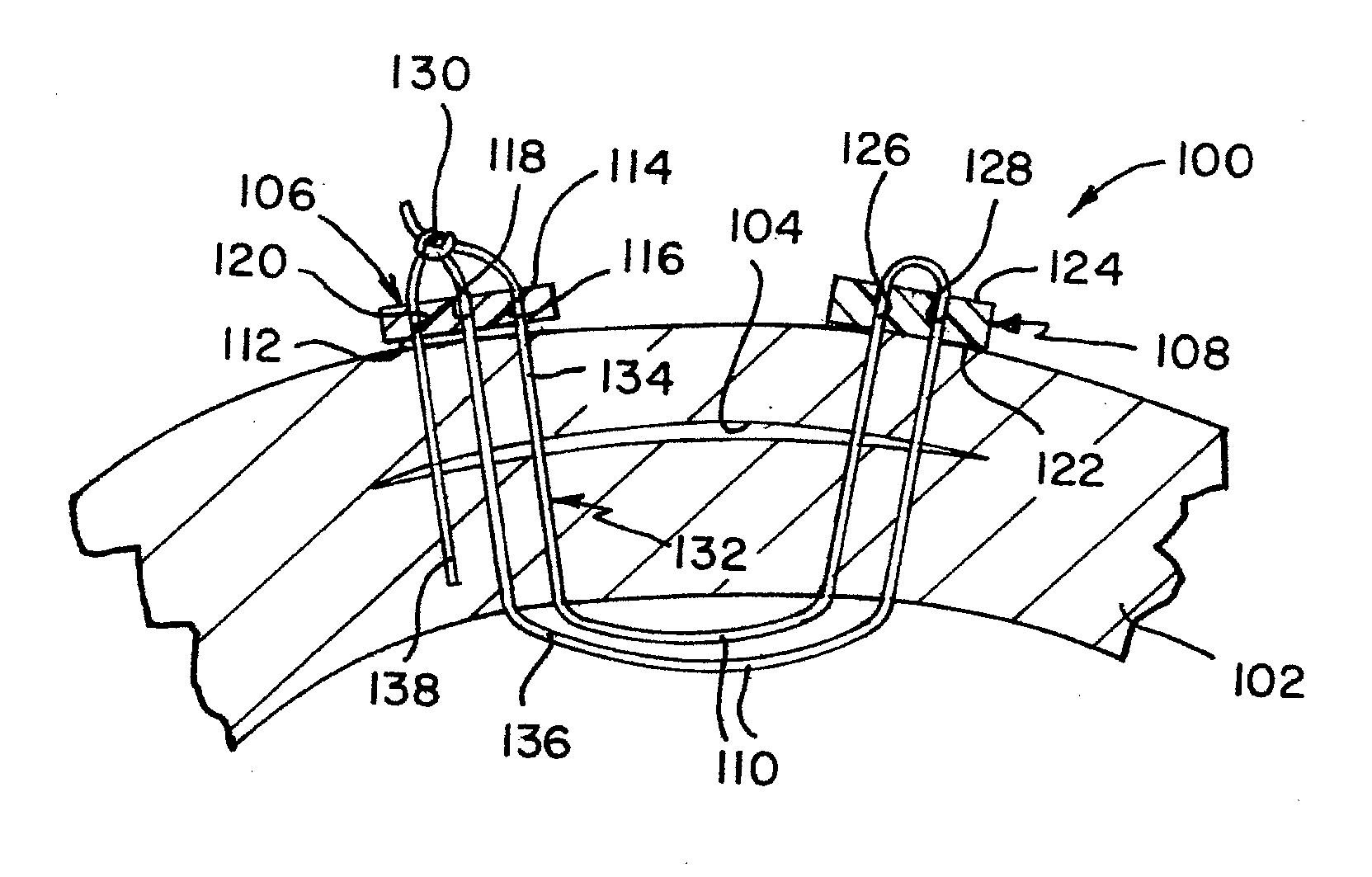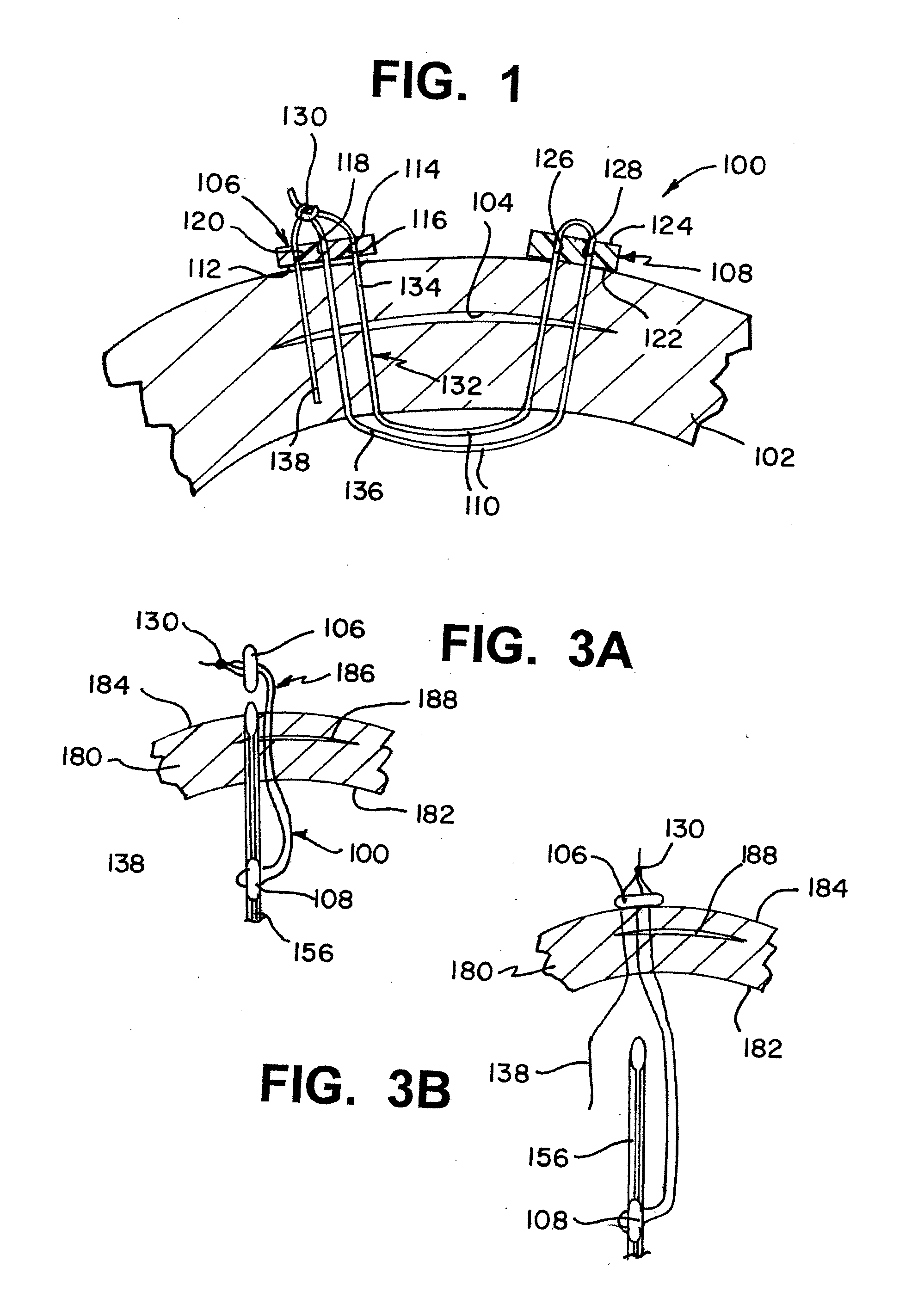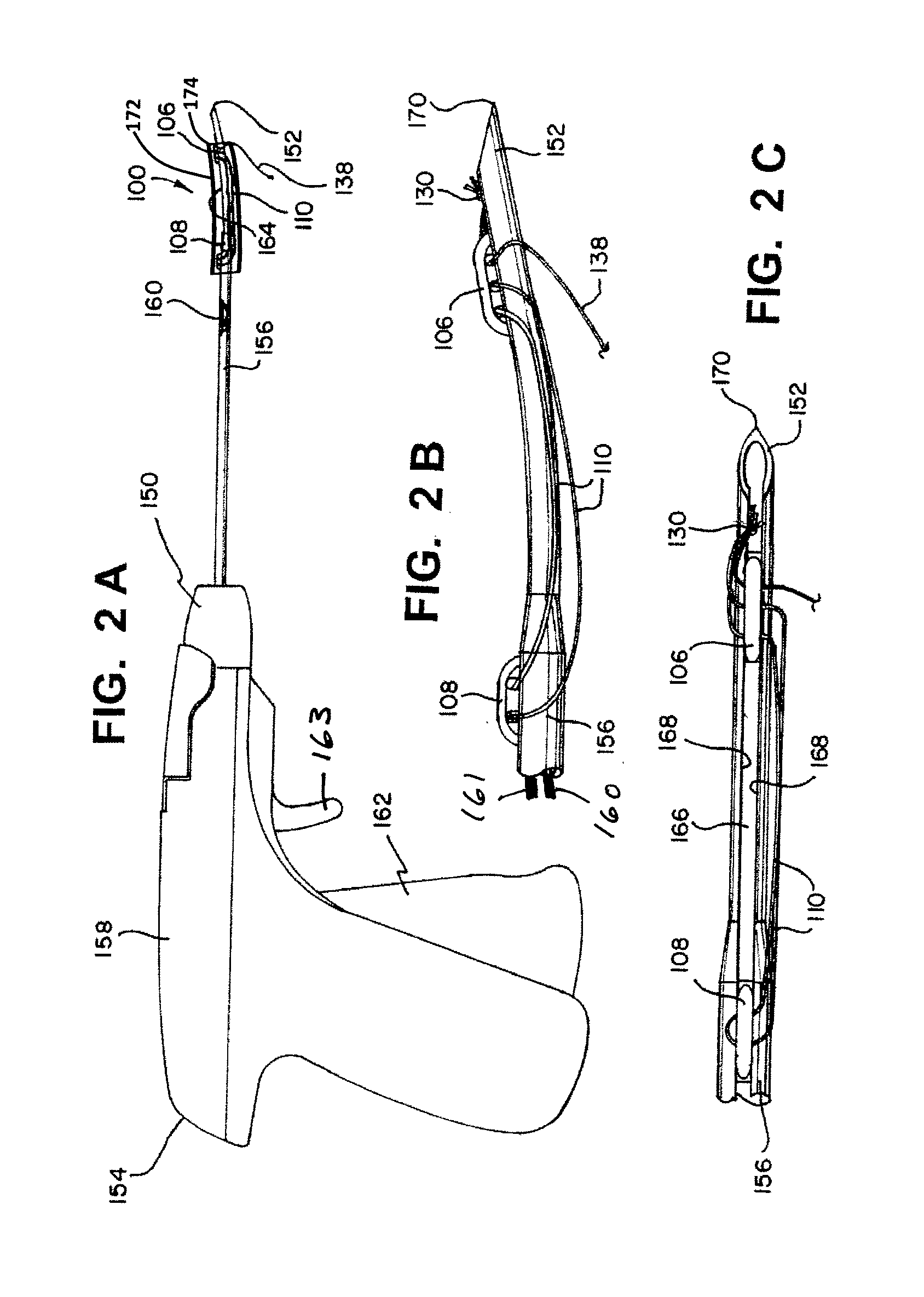Apparatus and method for repairing tissue
a tissue and applicator technology, applied in the field of tissue repair apparatus and methods, can solve the problems of less than optimal repair, difficult and tedious knocking process, and current devices without drawbacks, and achieve the effect of reducing the loop length
- Summary
- Abstract
- Description
- Claims
- Application Information
AI Technical Summary
Benefits of technology
Problems solved by technology
Method used
Image
Examples
Embodiment Construction
[0041]Devices and methods of the present invention enable a surgeon to consistently and reliably repair tissue tears and separations using two fixation members interconnected by continuous segments of suture. Surgeries using the devices of the present invention are performed without the surgeon having to tie any suture knots, and are particularly suitable for performing arthroscopic or endoscopic repairs. Repairs performed using the present invention leave no knots, suture joints or other potential stress points along the suture interconnecting the fixation devices, reproducibly position any knots away from tissue areas that are particularly susceptible to post-surgical damage, for example, articulating tissue surfaces. It is to be understood that particular devices and methods disclosed herein are exemplary and not limiting of the present invention, for example, embodiments illustrated herein for repairing in-substance injuries to soft tissue, such as the meniscus of the knee, can ...
PUM
 Login to View More
Login to View More Abstract
Description
Claims
Application Information
 Login to View More
Login to View More - R&D
- Intellectual Property
- Life Sciences
- Materials
- Tech Scout
- Unparalleled Data Quality
- Higher Quality Content
- 60% Fewer Hallucinations
Browse by: Latest US Patents, China's latest patents, Technical Efficacy Thesaurus, Application Domain, Technology Topic, Popular Technical Reports.
© 2025 PatSnap. All rights reserved.Legal|Privacy policy|Modern Slavery Act Transparency Statement|Sitemap|About US| Contact US: help@patsnap.com



